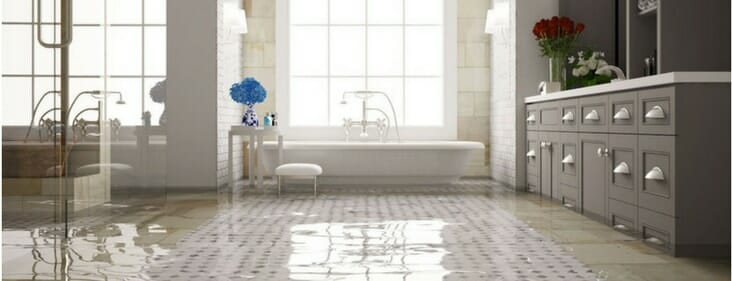Do you find yourself interested in know-how concerning Common Causes of Water Damage in a Bathroom?

The restroom is incredibly susceptible for wet buildup and potential water damage due to the regular use of water in it. This short article provides basic assessment strategies to aid identifying water damages dangers.
The regular use water in the shower room makes it incredibly susceptible for moist buildup and potential water damage. By evaluating it frequently, you can minimize water relevant problems.
The complying with set of assessments is simple to perform and also should be done once in every three months in order to keep your shower room in good shape and to prevent potential water damages caused by the bathtub, the shower, pipeline joints and also plumbing, sinks, closets, as well as the bathroom
Do not overlook carrying out these inspections and also be extensive while doing them. Bear in mind that these easy inspections can save you a great deal of cash by giving very early signs for water damages
Bath tub as well as Shower
The shower as well as tub need special attention and upkeep. Examine the ceramic tiles as well as replace if cracked. Make sure that there is no missing out on cement in between the ceramic tiles. Examine and change fractured caulking at joints where the wall surfaces satisfy the floor or the bathtub. Obstructed drains pipes as well as pipes problems will certainly protect against the tub from drying and might suggest major issues beneath the bath tub. Seek advice from an expert right away to prevent architectural damages. Take note of discolorations or soft locations around the tub walls as they might suggest an interior leak.
Plumbing
Signs for water damages are difficult to detect given that many pipes are mounted inside the walls.
Pay special focus to flooring and wall surfaces moisture and also spots as they may show an undetectable plumbing problem. Examine wetness levels in adjacent rooms too.
Sinks as well as Cabinets
Sinks and cupboards are exposed to dampness and moisture everyday and also are commonly neglected. Evaluate frequently under the sink and also on the counter top over it. Repair any drip in the trap as it might suggest drainpipe issues. Check out the sink, sluggish draining pipelines may show a blocked drainpipe. Replace sink seals if they are split or loose.
The Bathroom
The commode is a susceptible water joint. Check the water lines as well as look for leaks around the bathroom seat, in the tube, as well as under the water storage tank. If you find any kind of signs of wetness on the flooring around the bathroom, look for leaks in the toilet rim and also container seals.
Understand that hanging bathroom dish antiperspirants increases the possibilities for obstructions.
Water Damage Signs In The Bathroom To Avoid Cleanup
Musty smell
This is one of the easiest signs to catch because musty smells are so odorous. The damp, earthy, moldy smell should be a big red flag. The smell will develop when moisture gets trapped in surfaces, and begins to facilitate mold growth. Leaking pipes under cabinets, inside walls, and behind shower fixtures will cause moisture to stay trapped and not dry, which will lead to mold growth and spread. As soon as you notice any musty smells in your bathroom, have it checked for hidden water damage and cleanup signs.
Visible mold
If the smell isn’t there to give it away, sometimes you will actually see mold growth. Finding mold in your bathroom is a serious problem, because mold is very harmful to your health. By the time mold growth is visible, it also means that water damage has already occurred and been present for some time. The only way the mold problem can be resolved is to find the source of the moisture and get it stopped. To safely and adequately remove mold, you need to have professionals handle the remediation. Do not waste any time in getting mold problems addressed, fixed, and sanitized so that you can protect you and your family from the many respiratory symptoms caused by mold exposure.
Damaged floors
Bathroom floors should be able to withstand some exposure to water while still remaining in good condition. However, when excess exposure or water leaks occur, they will begin to damage even the most water-resistant flooring. If you notice any cracking, bubbling, staining, or warping on your bathroom floors, there is probably a water leak somewhere causing the distortion. If you notice areas of the floor have become softer, or even have a spongy feeling, there is probably damage to the subfloor. Subflooring is typically made up of plywood. When plywood is exposed to water or moisture, it will absorb it. Once it has become saturated, the weight of the excess water will cause the wood to swell and soften. Check the floors in your bathroom frequently to catch any of these sings before they lead to damaged subflooring.
Changes on walls
When water leaks behind walls, it will cause changes in the drywall. Peeling plaster, blistering paint, and soggy wallpaper are all good indicators that excess water is building up behind the wall. Water leaking behind drywall will cause it to swell and be soft to the tough. If you start to notice gaps along the trim of your walls, or where tile meets the wall, it could also be a strong indicator that there is a leak behind the wall. Any changes, distortion, or damage on the walls should be evaluated as soon as you notice it to prevent further water damage and cleanup.

I found that content on Looking for Signs of Water Damage in the Bathroom while doing a search on the search engines. Loved our content? Please share it. Help somebody else find it. We take joy in reading our article about How to Fix a Water Damage Bathroom.
Rates
 Danny Tamberelli Then & Now!
Danny Tamberelli Then & Now! Jonathan Taylor Thomas Then & Now!
Jonathan Taylor Thomas Then & Now! Bradley Pierce Then & Now!
Bradley Pierce Then & Now! Marla Sokoloff Then & Now!
Marla Sokoloff Then & Now! Nicholle Tom Then & Now!
Nicholle Tom Then & Now!